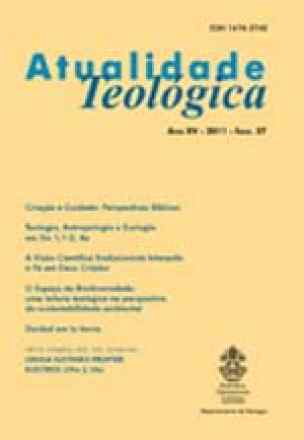O encontro de Marta com Jesus: Profissão de Fé (Jo 11,17-28)
Atualidade Teológica
O encontro de Marta com Jesus: Profissão de Fé (Jo 11,17-28)
Autor Correspondente: J. Ferreira, | [email protected]
Palavras-chave: Marta, Jesus, ressurreição, vida, encontro
Resumos Cadastrados
Resumo Português:
O evangelista João expõe a questão da fé (objeto) em todo o seu livro. Ele tem um objetivo: se nos sinóticos Pedro é o referencial, o IV evangelho relata a fé de vários personagens: Natanael (1,49), a Samaritana (4,19), os discípulos representados por Pedro (6,68-69), o cego de nascença (9,38), o próprio evangelista (19,35), Madalena (20,18) e Tomé (20,28). Porém, é no sinal sobre Lázaro, que a profissão de fé de uma mulher da periferia descreve uma teologia completa. Marta compreende Jesus em três dimensões cristológicas: messiânica (Cristo), divina (Filho de Deus) e da encarnação (devia vir ao mundo). Quem crê tem a vida eterna porque já passou da morte para a vida (Jo 5,24). Pelos métodos histórico-crítico e sociológico/conflitual, a partir de especialistas no IV Evangelho, é possível ver que Marta faz o encontro (apánthesis) com Jesus que se revela: “Eu sou a ressurreição e a vida... E todo aquele que vive e crê em mim, de nenhum modo há de morrer para sempre” (11,25-26). O artigo procura mostrar o resultado do seu ato de fé: Marta crê (11,27) e vai anunciar à sua irmã que encontrou Jesus.
Resumo Inglês:
The evangelist John exposes the issue of faith (object) throughout his book. It has a purpose: if Peter is the reference in the Synoptics, the IV 10.17771/PUCRio.ATeo.61646 834 ATeo, Rio de Janeiro, v. 26, n. 70, p. 833-848, jul./dez.2022 Gospel reports the faith of several characters: Nathanael (1.49), the Samaritan woman (4.19), the disciples represented by Peter (6.68-69) , the man born blind (9.38), the evangelist himself (19.35), Magdalene (20.18) and Thomas (20.28). However, it is in the sign about Lazarus that the profession of faith of a woman from the periphery describes a complete theology. Martha understands Jesus in three Christological dimensions: messianic (Christ), divine (Son of God) and incarnation (he was to come into the world). Whoever believes has eternal life because he has passed from death to life (Jn 5:24). Through historical-critical and sociological/conflictual methods, based on specialists in the Fourth Gospel, it is possible to see that Martha makes the encounter (apánthesis) with Jesus who reveals himself: “I am the resurrection and the life... lives and believes in me, will by no means die forever” (11:25-26). The article seeks to show the result of her act of faith: Martha believes (11, 27) and goes to announce to her sister that she has found Jesus.

